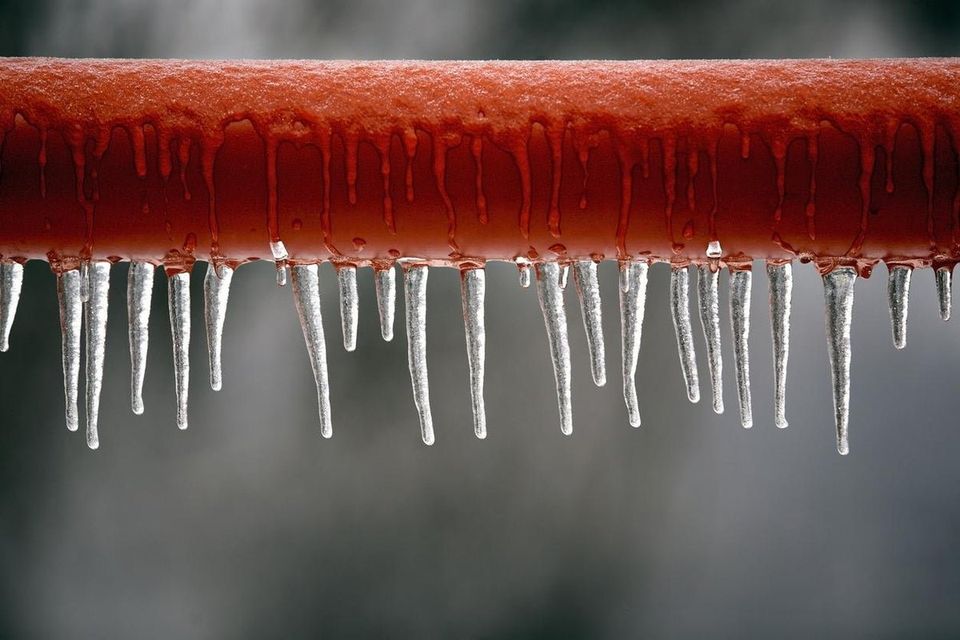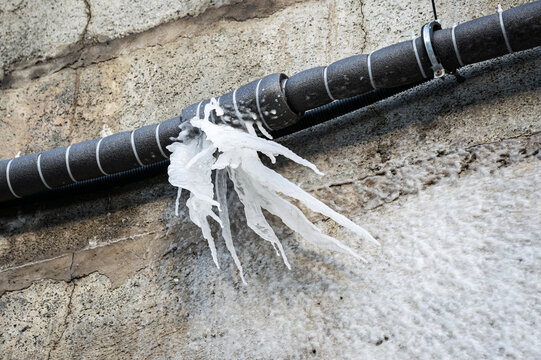Tips to Avoid Frozen Plumbing in Cold Weather: Pro Advice
Tips to Avoid Frozen Plumbing in Cold Weather: Pro Advice
Blog Article
We have found this great article on 6 Ways to Prevent Frozen Pipes directly below on the net and decided it made good sense to share it with you in this article.

Winter can ruin your pipes, particularly by freezing pipes. Here's how to avoid it from occurring and what to do if it does.
Introduction
As temperatures drop, the risk of icy pipelines boosts, potentially resulting in expensive repair work and water damages. Recognizing exactly how to avoid frozen pipelines is vital for house owners in cold environments.
Prevention Tips
Shielding prone pipes
Cover pipes in insulation sleeves or utilize heat tape to shield them from freezing temperatures. Concentrate on pipes in unheated or external areas of the home.
Home heating techniques
Maintain interior areas appropriately heated, particularly locations with plumbing. Open up cupboard doors to enable warm air to circulate around pipes under sinks.
How to determine icy pipes
Try to find decreased water circulation from taps, uncommon odors or sounds from pipes, and noticeable frost on exposed pipes.
Long-Term Solutions
Structural modifications
Take into consideration rerouting pipelines far from outside walls or unheated areas. Include additional insulation to attics, basements, and crawl spaces.
Upgrading insulation
Invest in high-grade insulation for pipelines, attics, and wall surfaces. Appropriate insulation aids preserve consistent temperature levels and decreases the threat of frozen pipes.
Safeguarding Exterior Pipes
Yard tubes and exterior taps
Separate and drain yard hoses prior to winter season. Mount frost-proof spigots or cover exterior taps with protected caps.
Recognizing Frozen Pipelines
What creates pipelines to ice up?
Pipes freeze when revealed to temperatures below 32 ° F (0 ° C) for expanded durations. As water inside the pipes freezes, it broadens, taxing the pipeline walls and potentially causing them to rupture.
Threats and problems
Icy pipelines can lead to supply of water disruptions, residential property damages, and costly repair services. Ruptured pipelines can flooding homes and trigger substantial structural damage.
Indications of Frozen Piping
Recognizing icy pipes early can prevent them from bursting.
What to Do If Your Pipes Freeze
Immediate activities to take
If you suspect frozen pipelines, keep faucets available to eliminate stress as the ice melts. Utilize a hairdryer or towels taken in warm water to thaw pipes slowly.
Conclusion
Stopping frozen pipelines requires positive steps and quick feedbacks. By comprehending the reasons, indications, and preventive measures, homeowners can protect their plumbing throughout winter.
5 Ways to Prevent Frozen Pipes
Drain Outdoor Faucets and Disconnect Hoses
First, close the shut-off valve that controls the flow of water in the pipe to your outdoor faucet. Then, head outside to disconnect and drain your hose and open the outdoor faucet to allow the water to completely drain out of the line. Turn off the faucet when done. Finally, head back to the shut-off valve and drain the remaining water inside the pipe into a bucket or container. Additionally, if you have a home irrigation system, you should consider hiring an expert to clear the system of water each year.
Insulate Pipes
One of the best and most cost-effective methods for preventing frozen water pipes is to wrap your pipes with insulation. This is especially important for areas in your home that aren’t exposed to heat, such as an attic. We suggest using foam sleeves, which can typically be found at your local hardware store.
Keep Heat Running at 65
Your pipes are located inside your walls, and the temperature there is much colder than the rest of the house. To prevent your pipes from freezing, The Insurance Information Institute suggests that you keep your home heated to at least 65 degrees, even when traveling. You may want to invest in smart devices that can keep an eye on the temperature in your home while you’re away.
Leave Water Dripping
Moving water — even a small trickle — can prevent ice from forming inside your pipes. When freezing temps are imminent, start a drip of water from all faucets that serve exposed pipes. Leaving a few faucets running will also help relieve pressure inside the pipes and help prevent a rupture if the water inside freezes.
Open Cupboard Doors
Warm your kitchen and bathroom pipes by opening cupboards and vanities. You should also leave your interior doors ajar to help warm air circulate evenly throughout your home.

I found that piece about Prevent Frozen Pipes while doing a search on the internet. In case you appreciated our article if you please don't forget to share it. Thank you for going through it.
Schedule Appointment Report this page